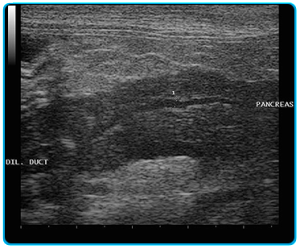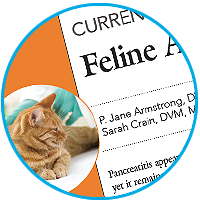Ultrasound of the Feline pancreas – A challenge for Brisbane Veterinarians!
by Vicki Stenner BVSc MVS MACVSc
Pancreatitis is an increasingly recognized illness in cats in modern veterinary practice. An increased clinical awareness of the disease, advances in feline pancreatic lipase testing, and the availability of mobile ultrasound services has made diagnosing pancreatitis much easier for GP veterinarians in Brisbane.
Similar to dogs, pancreatitis in cats can be classified clinically and histologically as acute or chronic. Most cases of pancreatitis in cats are idiopathic, while some cats with pancreatitis will also have inflammatory hepato-biliary disease and/or intestinal disease. More than 50% of cats with diabetes mellitus have concurrent pancreatitis, which is usually the more chronic form.
The challenge in diagnosing this disease in cats is that clinical signs and clinicopathologic abnormalities are often non-specific and non-localising. The clinical signs most often noted in cats with pancreatitis are lethargy and a poor appetite. Some cats may have vomiting, diarrhea, fever, jaundice, or abdominal pain. CBC and serum biochemistry abnormalities are also often non-specific. Whilst the measurement of feline pancreatic lipase (fPL) by immunoassay is considered to be the most sensitive and specific serum biomarker for feline pancreatitis, false negatives and positives do occur. The in-house version of this test is considered most valuable as a ‘rule-out’ test for pancreatitis. Pancreatic biopsy is considered to be the gold standard but is not often done due to its invasiveness.

Image 1 – The pancreas appears enlarged and hypoechoic. The surrounding mesentery is hyperechoic. The bile duct appears mildly dilated at 1.9mm.
Definitive diagnosis of pancreatitis in cats therefore relies on a combination of modalities, including physical examination findings, laboratory testing, and abdominal ultrasonography.
With high-quality ultrasound machines and a skilled sonographer, abdominal ultrasound is a valuable diagnostic tool in the diagnosis of feline pancreatitis. Abnormal findings include increased pancreatic thickness, irregular pancreatic margins, hypoechoic changes within the pancreas, and hyperechoic peripancreatic fat. Abdominal effusion, mesenteric lymphadenopathy, cavitated pancreatic lesions and dilation of the pancreatic duct may also be noted. In addition abdominal ultrasonography enables evaluation of the patient for co-morbidities such as inflammatory hepato-biliary and intestinal disease.
Diagnosis and Management of Feline Pancreatitis
The following article provides for more detailed information on the diagnosis and management of feline pancreatitis.
Journal Article: Feline Acute Pancreatitis
Journal: Current Concepts in Diagnosis & Therapy
Authors: P. Jane Armstrong and Sarah Crain
Visit Today’s Veterinary Practice Website | January/February 2015 | Today’s Veterinary Practice | p 22-32
Feel free to contact us if you have a patient with suspected pancreatitis we would be happy to help. Vet Ultrasound Group provides a mobile ultrasound service for veterinarians in Brisbane and surrounds.




